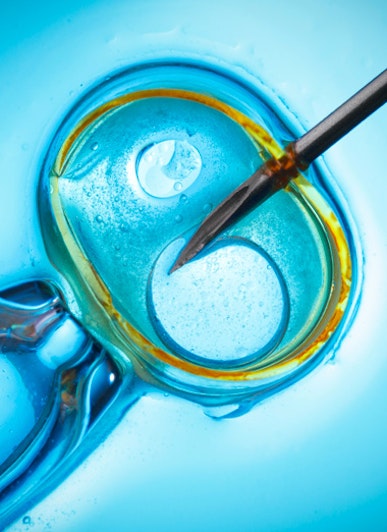Decades Of Fertility Surgical Experience At Denver Fertility
The Infertility specialists at Denver Fertility are not only clinicians but also gynecologic surgeons trained in fertility surgery including minimally invasive surgical (MIS) techniques that are proven surgical procedures to correct anatomical abnormalities that can lead to infertility or pregnancy loss.
Dr. Albrecht and Dr. Ambler combined bring more than five decades of surgical experience. All surgery is scheduled and performed within our practice as opposed to being referred out to another physician. Without fertility surgery, a blocked fallopian tube, uterine septum or severe endometriosis may prevent you from conceiving on your own. Dr. Ambler and Dr. Albrecht perform advanced gynecologic surgery and minimally invasive surgery to aid in conceiving.
In addition, Dr. Albrecht continues to teach medical residents about gynecologic surgery as well as minimally invasive surgery at Rose Medical Center. Dr. Albrecht has been involved in this kind of teaching for decades, believing that patients and society will ultimately benefit from advanced surgical skills being passed from one generation of surgeons to the next.
Dr. Ambler and Dr. Albrecht’s main purpose for fertility surgery is to correct the root physical problem so that couples can become pregnant without further assistance. Sometimes a combination of surgery, fertility medication, and/or assisted reproductive technologies will lead to pregnancy.
The most common surgical procedures include minimally invasive procedures such as laparoscopy, hysteroscopy, and robotic surgery as well as traditional methods such as open laparotomy. Your infertility diagnosis will prescribe which procedure is best for you.
Is There Still a Role for Reproductive Surgery?
Reproductive surgery is a procedure to correct anatomical disorders of the reproductive tract. This includes surgery as primary treatment of infertility in women with tubal disorders or endometriosis.
With the dramatic improvements in in vitro fertilization (IVF) treatment, the role of surgical treatment for tubal disorders and endometriosis has been questioned. Nevertheless, we can expand the use of reproductive surgery to include procedures to enhance the outcome of IVF treatment.
It has long been recognized that when a hydrosalpinx is present, the success rate with in vitro fertilization is reduced by approximately 50%. Surgery to either remove or repair the hydrosalpinx restores the pregnancy rate to normal. Other surgeries that can enhance the chances for natural pregnancy as well as pregnancy with IVF include uterine reconstruction for congenital anomalies such as septate or bicornuate uterus and reparative surgery to remove endometrial polyps, fibroids, and scar tissue (Asherman's syndrome).
This discussion will be limited to surgery to repair damaged fallopian tubes and endometriosis.
Reproductive Surgery as Primary Treatment for Infertility
In the past, among the many fertility-promoting surgical procedures, the most common were performed to treat tubal disorders or endometriosis. Tubal disease is suspected to be the cause of female infertility in 25-35% of patients. Prior history of pelvic inflammatory disease (PID), peritonitis from appendicitis, previous pelvic surgery for ovarian cysts, fibroid removal, or ectopic pregnancies may lead to adhesive disease in the pelvic organs resulting in tubal damage or blockage.
Tubal blockage can occur at any segment of the fallopian tube but most commonly affects the distal tube often times resulting in a hydrosalpinx. Distal disease represents approximately 80% of all tubal disease. The surgical treatment of a hydrosalpinx is a neosalpingostomy where a new opening is created at the end of the fallopian tube where the blockage occurs. The pregnancy rate under the best circumstances may be as high as 50% when the tubal damage is minimal but more commonly is much less than that. In addition, the patient will have an increased risk of an ectopic pregnancy because of the residual damage to the fallopian tube. The normal risk of an ectopic pregnancy in the general population is <1%. After tubal surgery, the risk is increased to 5-20%. In patients undergoing IVF, the ectopic pregnancy rate is 1-2%.
Proximal tubal blockage is generally diagnosed by a hysterosalpingogram showing blockage at the uterotubal junction. It can also be suspected based on a FemVue that shows no flow of bubbles from the uterine cavity into the fallopian tubes. Because tubal spasm without true obstruction may be the explanation to confirm the diagnosis, it is generally recommended that the patient have two studies confirming the proximal obstruction. Frequently patients with proximal tubal obstruction will also have a hydrosalpinx and/or peritubal adhesive disease and therefore two sites of damage that are compromising their fertility.
Treatment consists of selective tubal catheterization which can be done by a variety of means including under fluoroscopic guidance by an interventional radiologist which is very expensive and even if the procedure is successful, the presence of peritubal adhesive disease cannot be determined. Hysteroscopic guided tubal catheterization can also be performed and usually in conjunction with laparoscopy which confirms the patency of the fallopian tube as well as the status of the fallopian tube regarding hydrosalpinx or peritubal adhesions. Approximately 20% of tubes cannot be catheterized and as many as 50% of tubes that are successfully catheterized will reocclude rendering the procedure unsuccessful. Traditionally, tubal reimplantation or tubal corneal anastomosis was performed but the patency rate and pregnancy success rate are poor. In addition, there is an increased risk of ectopic pregnancy.
Mid-tubal obstruction almost never occurs naturally but is the result of a prior tubal sterilization procedure. The chances for success after a tubal reanastomosis procedure depends upon multiple factors including the current age of the woman, type of tubal ligation procedure performed, ovarian reserve status and the fertility of the husband who is frequently a new partner as opposed to the same partner that resulted in her prior pregnancies. Under ideal circumstances, the success rate with the surgical procedure is essentially the same as with IVF. In the past, my recommendation was usually for these patients to go through the surgical reanastomosis procedure because the cost was less than IVF. In the past 20 years the increase in hospital costs for surgery has outpaced the increase in cost to have IVF. Currently, it is more expensive to have the surgical procedure than to go to IVF. In addition, IVF avoids the surgery risks and the ectopic pregnancy rate is 1-2% instead of 5%. Should the current husband have abnormalities in his semen analysis, the surgical procedure might not even be indicated as IVF may be necessary to overcome the sperm problems.
Periadnexal adhesions can impair tubal mobility and therefore ovum pickup by the fallopian tube. Because the fallopian tubes are open, these adhesions are generally not diagnosed by hysterosalpingogram or a FemVue procedure. The diagnosis is usually established at the time of a diagnostic laparoscopy. In the past, diagnostic laparoscopy was almost an automatic part of the fertility evaluation process; however, today diagnostic laparoscopy for infertility is rarely performed. If periadnexal adhesions are found, removal of the adhesions (salpingolysis, salpingo-ovariolysis or ovariolysis) can be performed at the same time. Pregnancy rates are generally very good but an ectopic pregnancy is one of the complications.
Endometriosis is a relatively common disease in women with infertility. This is especially true for those women having significant problems with severe dysmenorrhea, pelvic pain, and dyspareunia. The monthly fecundity rate in women with endometriosis is 2-10% compared to the normal fecundity rate of 15-25%. In a randomized study of nearly 350 women with minimal and mild endometriosis found at the time of diagnostic laparoscopy performed because of unexplained infertility, it was found that the pregnancy rate after ablation of the endometriosis was nearly twice as high (30.7% versus 17.7%) as in the patients who received just a diagnostic laparoscopy with no treatment of their endometriosis.
In the presence of an endometrioma, removal of the cyst wall from the ovary resulted in a 12-month cumulative pregnancy rate after excision of >50%. This was significantly higher than patients who only had drainage of the endometrioma which resulted in a pregnancy rate of <20%. In addition, the recurrence rate of an endometrioma was significantly less with excision versus drainage.
Reproductive Surgery versus IVF
It is easy to see based upon the information reviewed above that the cumulative pregnancy rate at 12 months after the various types of reproductive surgery is between 10 and 50% with the ectopic pregnancy rate between 4 and 20%. When these numbers are compared to the current pregnancy rate of IVF which is >45% with an ectopic pregnancy rate of <2%, reproductive surgery results are inferior. The only exception to this is tubal reanastomosis and in this case the economics of surgery may also favor IVF.
In the past when IVF programs transferred multiple embryos, one of the risks of IVF was multiple pregnancies; however, today with the improved IVF success rates, it is common to transfer only a single embryo obviating that risk. Reproductive surgery if successful does offer the opportunity to have more than one pregnancy from a single surgical intervention. However, with the high success of embryo cryopreservation since the advent of vitrification, many patients undergoing IVF also have the opportunity to have more than one pregnancy from a single egg retrieval cycle.
Because of the superior IVF pregnancy rate, the role of reproductive surgery as primary treatment of infertility is limited. In young women who cannot undergo IVF treatment because of financial limitations or religious beliefs, laparoscopy and reproductive surgery should be considered giving these women a chance to have a pregnancy.
Reproductive Surgery to Enhance IVF Outcomes
There are times when reproductive surgery can play a crucial role in enhancing the outcome of an IVF cycle. Some conditions may impair implantation and/or a successful pregnancy that can be surgically corrected before a patient undergoes IVF or other fertility treatments.
Conditions such as a hydrosalpinx, endometriosis especially when associated with an endometrioma, endometrial polyps, uterine myomas, intrauterine adhesions, and uterine malformations can affect the likelihood for implantation and/or delivery of a healthy baby.
Endometriomas have been shown to not significantly affect the number of eggs retrieved from the ovary that contained the endometriosis versus the healthy ovary. Moreover, the embryo quality and clinical pregnancy rate do not seem to be significantly different in patients with endometriomas especially when the endometrioma is small <4 cm in diameter. Reduced ovarian reserve after cystectomy for an endometrioma has been demonstrated in multiple studies especially when there are multiple endometriomas or large endometriomas. This results in a reduced number of oocytes collected at IVF and consequently a reduced number of embryos available for transfer and pregnancy.
Endometrial polyps have been shown to impair fertility. A randomized study of patients undergoing intrauterine inseminations showed a twofold increase in pregnancy rate after polypectomy. It should be noted that there are other studies that do not show an improvement in pregnancy rate after removal of endometrial polyps. I personally think this discrepancy can be explained by the size and type of endometrial polyp. Large endometrial polyps >1 cm are more likely to cause problems than small polyps that are <5 mm. Sessile polyps are defined as a raised area of endometrium sort of like a mountain. These polyps rarely cause infertility unless they are very large as the endometrium covering the polyp is completely normal and in phase with the surrounding endometrium. Pedunculated polyps are like toadstools and have a fibrovascular pedicle (the stalk of the toadstool) and are covered with an endometrium that is generally out-of-phase with the surrounding endometrium. They are much more likely to result in fertility problems. Nevertheless, because of the complexity and cost of IVF treatment, we generally recommend the removal of endometrial polyps before starting an FET cycle.
Submucous myomas reduce fertility and hysteroscopic myomectomy improves conception and live birth rate. Again, as with polyps the size of the submucous myoma is also a factor. Hysteroscopic removal of a submucous myoma results in an increase of double-fourfold in the pregnancy rate compared to no intervention.
Intramural myomas are more controversial. In a meta-analysis of 19 studies involving over 6000 IVF patients, women with non-cavity distorting intramural myomas compared to patients without fibroids were seen to have a significant decrease in pregnancy rate. Other studies have not been able to confirm this. In our experience, we have seen patients with significant intramural myomas who have had successful pregnancies and other patients who have had several miscarriages until their fibroids were removed.
Intrauterine adhesions also known as Asherman’s syndrome are usually due to pregnancy-related uterine instrumentation. Intrauterine adhesions can also occur after hysteroscopic polypectomy and myomectomy. Although there is a paucity of evidence for the relationship between infertility and intrauterine adhesions, it is logical to think that the more normal the uterine environment is before an embryo is transferred to the uterus the higher the likelihood for a successful pregnancy. Nevertheless, we have numerous pregnancies in patients who have had only partial surgical success of removal of the intrauterine adhesions. If a significant portion of the uterus can be repaired and the endometrium in that space is growing normally, implantation and growth of the pregnancy is certainly possible.
A uterine septum is associated with poor reproductive outcomes. This is particularly the case in women with repeated pregnancy losses or history of preterm delivery. It is not clear if the removal of the septum improves the chances for becoming pregnant; however, a single study in women undergoing IVF showed that the live birth rate with a large septum was approximately 3% before surgery and 18% after surgery. The data is clear that a metroplasty is associated with a lower rate of miscarriage and premature delivery and a higher live birth rate.
Concluding Remarks
In the past, reproductive surgery was the only option that many patients had to try to become pregnant and have a family. Over time, reproductive surgery has evolved from merely fertility-promoting procedures to techniques that can enhance IVF success.
The role of surgery as the primary treatment of tuboperitoneal infertility is limited by the poor success rate, high ectopic pregnancy rate, and the invasive nature of the surgery. Laparoscopic surgery is a minimally invasive procedure; however, it still has low success and high ectopic pregnancy rates.
It is clear that removal of a hydrosalpinx leads to a higher IVF live birth rate and should be performed in all patients prior to an embryo transfer.
Removal of endometriomas especially if small may not be needed unless the patient is symptomatic with her endometriosis.
Hysteroscopic removal of endometrial polyps and submucosal myoma is strongly encouraged in patients before an embryo transfer procedure. The data supports an improvement in pregnancy rates in many of these patients.
Hysteroscopic metroplasty should be considered in all patients with uterine septa prior to embryo transfer.








